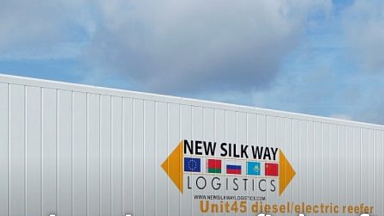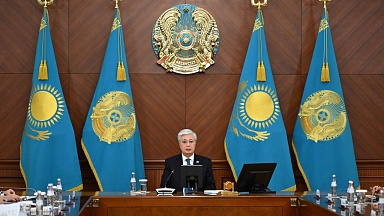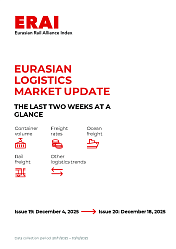According to data from the Office of Rail Transport (UTK), a total of 223.5 million tonnes of freight were moved by rail in 2024, down 3.5% year-on-year, while transport work amounted to 58.3 billion tonne-kilometres, a 5.4% decrease compared to 2023.
Hard coal volumes decline by over 12.9 million tonnes
The group comprising hard coal, lignite, crude oil, and natural gas recorded a volume of 64.2 million tonnes in 2024. This represents a decrease of approximately 12.5 million tonnes compared to 2023, with hard coal accounting for 97.5% of the volume. Its share in total rail freight dropped to 28.7%, falling below the 30% mark for the first time. In 2015, this group accounted for over 40% of rail freight volumes.
In terms of transport work, this group also dropped to third place with 10.5 billion tonne-kilometres and an 18.1% share, down from 24.6% in 2023. The average distance per tonne of coal dropped from 196 km in 2023 to 161 km in 2024.
Metal ores surpass coal in transport work
For the first time outside of the pandemic years, the category of metal ores and other mining products moved into first place in terms of transport work, accounting for 28.3% of the total. The total volume in this group reached 62.4 million tonnes (+2.2% year-on-year), just slightly behind coal volumes. Within the group, aggregates (gravel, sand, clay) accounted for 83.3%, and iron ore for 9%.
Transport work for this group rose to 16.5 billion tonne-kilometres, an increase of 9% compared to 2023.
Refined fuels hold ground, unclassified cargo grows
Coke and refined petroleum products came in third in terms of transported volume at 31.3 million tonnes, representing 14% of the total. Despite a 2.8% year-on-year drop in volume, the group maintained its second-place position in transport work with 11.5 billion tonne-kilometres and a 19.7% share.
Unclassified cargo—often corresponding to intermodal shipments—grew to a record 22.8 million tonnes, now representing 10.2% of the total mass. This category also reached 7.9 billion tonne-kilometres, accounting for 13.5% of transport work, supported by the increasing use of combined transport services.
Chemicals, construction materials, and equipment with strong growth
Chemicals and plastics transport rose by 14.5% year-on-year to 10.8 million tonnes, reversing a previous decline. Their share in total volume reached 4.8% and transport work rose by 11.3% to 3.37 billion tonne-kilometres.
Transport of products made from non-metallic minerals (e.g. cement, plaster) increased by 38.9%, with construction materials as a subgroup growing by 74.1%. The corresponding rise in transport work was 31.5% year-on-year.
Rail shipments of machinery, electronic devices, and equipment rose by 61%, while furniture and miscellaneous goods saw a 43.7% increase. Postal shipments (letters and parcels) increased by over 429%.
International freight share nears half of total work
International shipments—including export, import, and transit—accounted for 44% of the total transport work and 35.5% of the freight mass. Export was led by coke and refined petroleum products (7.4 million tonnes, 2.5 billion tonne-kilometres) and unclassified cargo (7.1 million tonnes, 2.3 billion tonne-kilometres).
Imports were dominated by unclassified cargo (9.7 million tonnes) and metal ores and other mining products, with iron ore imports in particular showing a large share at over 92% of total iron ore freight.
Source: https://railmarket.com/




